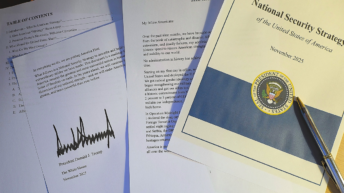
Executive Summary
India’s private education sector remains caught in a legal paradox. While the Constitution permits every citizen the right to practice any profession or carry on any trade or business under Article 19(1)(g), profit-making in education remains legally restricted. This restriction, rooted in judicial interpretations and archaic regulatory frameworks, has fostered an ecosystem riddled with opacity, inefficiency, and elite political capture. At the same time, unrecognised coaching institutes thrive in a competitive, innovative, and consumer-responsive environment, unencumbered by such limitations.
This white paper proposes to legitimise profit-oriented private schooling under a robust framework of transparent taxation and rigorous auditing. It argues that such reform, consistent with capitalist principles, would increase access, lower costs, reduce corruption, and align with the true spirit of a mixed economy (not through policy hypocrisy but as a result of honest coexistence between public and private interests).
I. Legal Background: A Constitutional Contradiction
Article 19(1)(g) guarantees the fundamental right to practice any profession or carry on any occupation, trade, or business. However, the Indian judiciary, through judgments such as T.M.A. Pai Foundation v. State of Karnataka (2002) and P.A. Inamdar v. State of Maharashtra (2005), has held that education is a “charitable activity” and cannot be treated as a business. Consequently, education institutions seeking state recognition are required to operate on a not-for-profit basis.
The contradiction becomes stark when compared with liberal policies in other sectors like healthcare, where private medical practitioners can legally operate for profit, despite medical services being arguably more essential public utilities than education. The judiciary has failed to adequately justify why a doctor may profit from curing the sick whereas an educator may not profit from teaching the young.
Moreover, Section 10(23C) and Section 11 of the Income Tax Act, 1961, mandate that charitable educational institutions be non-profit to avail tax exemptions. However, this provision is often misused, as we will show later.
Judicial interpretations have created a doctrinal maze where private investment in education is allowed only if it is masked under non-profit structures. As a result, capital remains under-utilised, education entrepreneurs are forced to innovate in grey areas (e.g., coaching), and legal clarity remains elusive.
II. Economic Rationale for Profit-Oriented Education
Market competition is the bedrock of innovation and consumer welfare. The Indian coaching industry, which operates outside the formal recognition framework, offers a vivid demonstration of this principle. Coaching centres compete on price, technology integration, quality of faculty, study materials, and academic outcomes. The sheer success of companies like BYJU’S, Unacademy, PhysicsWallah, and Allen demonstrates that market incentives can significantly uplift educational quality.
Recognised schools, if allowed to operate freely, can similarly harness:
- Capital for Infrastructure: If schools can legally make profits, they’ll attract private investment to build better classrooms, libraries, labs, and digital facilities which public schools often fall short of providing.
- Talent Acquisition: With profits allowed, schools can offer competitive salaries and attract top teachers, administrators, and specialists, just like private hospitals do with doctors.
- Technology Integration: Free-market schools would invest more in smart classrooms, learning apps, AI tutors, and other tech to stay ahead of competitors and improve student outcomes.
- Scalability & Economies of Scale: Successful schools could expand across cities and states, reducing per-student costs as they grow just like in any other industry. This can make quality education more affordable.
The forced not-for-profit model, in contrast, sustains artificial scarcity, encourages “under the table’’ transactions, and rewards political proximity over merit and efficiency. The Supreme Court’s historical position that education must be “charitable” and not “commercial” is outdated in today’s context. That interpretation was rooted in a time when education was scarce and state-driven. Instead, the modern educational sector is driven by the demand for skills, innovation, and tech which requires entrepreneurial freedom.
- Just as private hospitals have revolutionised healthcare by competing on quality and pricing, schools too must be free to innovate and grow.
- Declaring education as “non-commercial” restricts private funding, deters innovation, and sustains mediocrity through bureaucratic compliance.
- The coaching and EdTech sectors, which are profit-driven, have proven that capitalist models deliver results, scalability, and affordability through competition.
III. Auditing and Financial Transparency Issues
The current framework lacks comprehensive and enforceable auditing standards. Schools typically operate as trusts, societies, or non-profit companies under Section 8 of the Companies Act. However:
– Statutory audits are often perfunctory.
– Lack of Consolidation: No obligation exists to consolidate accounts of affiliated entities (e.g., hostels, transport services), resulting in diversion of revenue.
– Related Party Transactions: Trustees often own service providers and lease infrastructure to the schools in their charge at inflated rates, artificially reducing surpluses.
– Poor Enforcement: State education departments lack auditing capacity, and there is minimal synergy with Income Tax or Enforcement Directorate oversight.
This financial opacity allows corruption to thrive and deters genuine investors who prefer a clear regulatory and fiscal framework.
IV. Taxation Arbitrage and Misuse
The tax system designed to support non-profit education is being exploited to generate hidden profits. The abuse includes:
– Section 10(23C) Misuse
– Section 11 Diversion
– GST Leakages
– Black Money Generation
Without profit recognition and mandatory tax disclosures, these practices will persist. Recognising schools as taxable commercial entities would eliminate these arbitrages and ensure both transparency and revenue for the state.
V. Political Capture and Cronyism
A significant share of private schools, especially in northern India, are owned or controlled by individuals with direct or indirect political affiliations across party lines: BJP, SP, RJD, DMK, INC, and TMC.
These politicians use their influence to:
– Secure land at subsidised rates
– Circumvent licensing norms
– Receive disproportionate grants and affiliation leniencies
– Shield themselves from regulatory scrutiny
In Uttar Pradesh, anecdotal and media reports suggest that nearly half of recognised private schools are affiliated with political figures or their proxies. This not only consolidates economic power but also stifles genuine entrepreneurial participation.
VI. The Mixed Economy Hypocrisy
India defines itself as a mixed economy, theoretically balancing state ownership and private enterprise. Yet, the ideological inconsistency is glaring:
– In sectors like telecom, aviation, and health, private entities are encouraged.
– In education, private participation is permitted, but profits are criminalised.
– State-run schools are failing on most learning and infrastructure metrics.
The mixed economy argument is used selectively to justify regulatory capture. Public education continues to deteriorate, and policymakers themselves send their children to elite private institutions. The duality exposes an entrenched hypocrisy.
A true mixed economy would allow both models to coexist: public schools for the underprivileged and private, competitive institutions for others, all operating transparently and legally.
VII. A Capitalist Framework for Transparent, Accountable Private Education
To shift toward a functional, efficient education system, the following policy proposals are made:
1. Legal Reforms
2. Taxation Reforms
3. Auditing Reforms
4. Governance Reforms
Conclusion
India’s education system must be freed from the trap of ideological rigidity and policy hypocrisy. A profit-oriented schooling model subject to the rule of law, transparent taxation, and rigorous auditing can deliver better outcomes, lower costs, and broader access. The coaching industry and EdTech are examples of what is possible.
This is not an argument against public education. It is an argument for ending the arbitrary criminalisation of private initiative in one of the most vital sectors of national development. Competition, when matched with accountability, is the most ethical path to excellence.
Author’s Note
This white paper makes the case for a mixed economy only to highlight inconsistencies in current policy. The ideological stance of the author remains supportive of a Capitalist model. Education, like healthcare, housing, and technology, thrives best in open, competitive markets with minimal government interference and maximum transparency.






Add comment